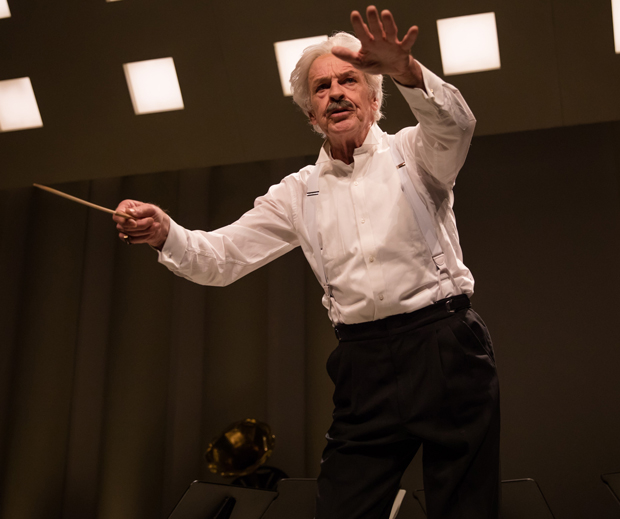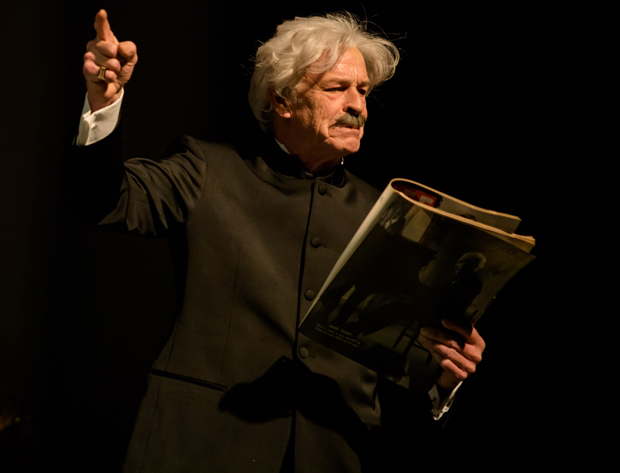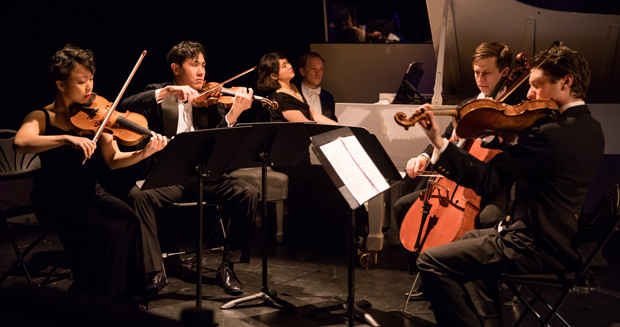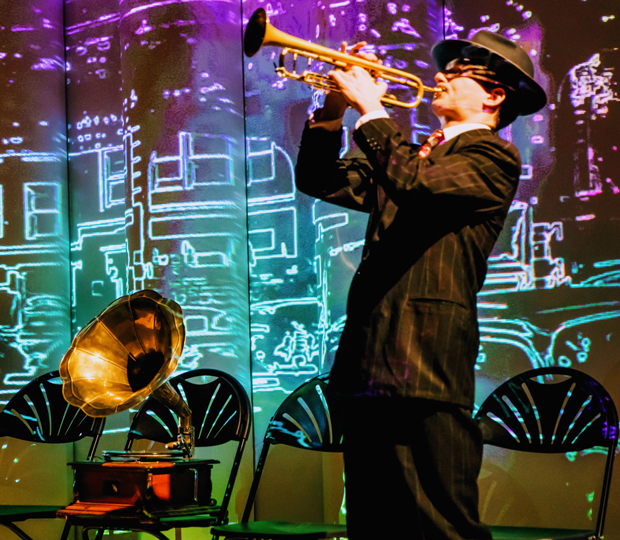Bringing Arturo Toscanini's Art to Dramatic Life in Maestro

(© Shirin Tinati)
Trying to dramatize the art of conducting is an inherently difficult proposition, because so much of what makes a conductor great depends on intangible qualities, like sheer personal magnetism, that aren't always outwardly apparent. Arturo Toscanini (1867-1957), the legendary Italian conductor who is the focus of the Ensemble for the Romantic Century's latest production, Maestro, is thus perhaps a better fit for dramatic treatment than most. He was famously despotic on the podium, and yet, for all the terror he struck in his players, he still managed to inspire them to give their utmost. According to Samuel Antek, former NBC Symphony Orchestra violinist, in his book This Was Toscanini, "The terrors and abuses Toscanini hurled at us were accepted and tolerated because they sprang from his own humility, sincerity, and love for the music."
John Noble, who plays Toscanini in Maestro, captures both his terrifying dictatorial tendencies and the inner passion underpinning them in a prologue set during rehearsals for a concert performance of Giuseppe Verdi's opera Aida in NBC's Studio 8-H (in set designer Vanessa James's impressive re-creation). That central contradiction of Toscanini's character is a consistent thread throughout the rest of the show, the text, written by Eve Wolf, of which is made up of letters he wrote to young Italian pianist Ada Mainardi, with whom he was carrying on an extramarital affair. The fire which he brought to his conducting, Maestro suggests, was fully reflected in the way he lived his life: his outspoken political disdain of the fascist government in Italy that he eventually fled, as well as the many romantic affairs he privately carried on outside of his marriage to Carla De Martini.

(© Shirin Tinati)
Maestro works best as an impressionistic portrait of a mercurial personality, and Noble, despite a shaky accent, brings enough charisma to his performance to make him reasonably compelling even at his most ornery. Not even his best efforts, though, can compensate for a shallowness at the heart of the show's conception of Toscanini. Though the featured letters dutifully chronicle the conductor's courage of his anti-fascist convictions and voracious sexual appetite, one coming upon Maestro unfamiliar with Toscanini's legacy would most likely come away still unsure of what made him such a seminal figure in 20th-century music, much less why a glacially paced two-hour glorified chamber concert is being devoted to him. (For such context, James Melo's musicology notes in the program are essential.)
Even the musical selections chosen for Maestro seem to have a tenuous connection to the show's subject at best. Much of the program is made up of chamber works by lesser-known Italian composers like Giuseppe Martucci, Aldo Finzi, and Mario Castelnuovo-Tedesco, all of them contemporaries of Toscanini's, some of whom he had a personal connection with, none of whose music he insistently championed on the podium. More pertinently, Richard Wagner, a Toscanini favorite, pops up in the form of Franz Liszt's piano transcription of the Liebestod from Tristan und Isolde, as does George Gershwin, one of the few modern composers whose music he conducted regularly, in an awkward trumpet-and-piano arrangement of Rhapsody in Blue by Maximilian Morel (who performs the trumpet part onstage). Maestro also features archival audio clips from rehearsals and live performances of the aforementioned Aida, highlighting arias in the opera that help express Toscanini's homesickness away from his Italian homeland.

(© Shirin Tinati)
Often the most reliable element of Ensemble for the Romantic Century shows, the music is performed beautifully here, with the Wagner, for instance, given a swooningly romantic interpretation by pianist Zhenni Li, unabashedly laying on the rubato in ways that remind one of Chopin. And there are some revelations amid the lesser-known pieces featured in Maestro. Arguably the most striking is the opening "Lento e sognante" movement of Castelnuovo-Tedesco's 1932 Quintetto for piano and strings, which thrillingly mingles a neoclassical feel with more forward-looking chromatic harmonies, all of it performed brilliantly by Li, violinists Mari Lee and Henry Wang, violist Matthew Cohen, and cellist Ari Evan (with projection designer David Bengali providing diverting if fairly generic visual accompaniment).
How much of this gorgeously performed music really relates to the life of the legendary Arturo Toscanini, however, is a question that Maestro never quite satisfyingly answers. But then, perhaps this play was bound to disappoint, considering how challenging it can be for any work to really get at the special alchemical magic of the conductor's art. Toscanini's real genius remains beyond the grasp of this well-meaning yet stillborn show.

(© Shirin Tinati)










